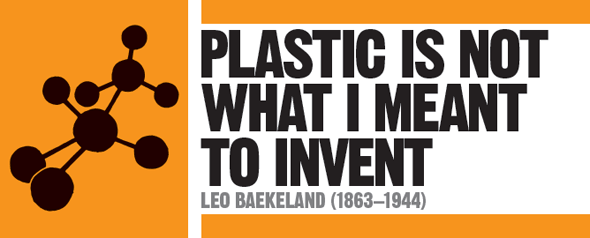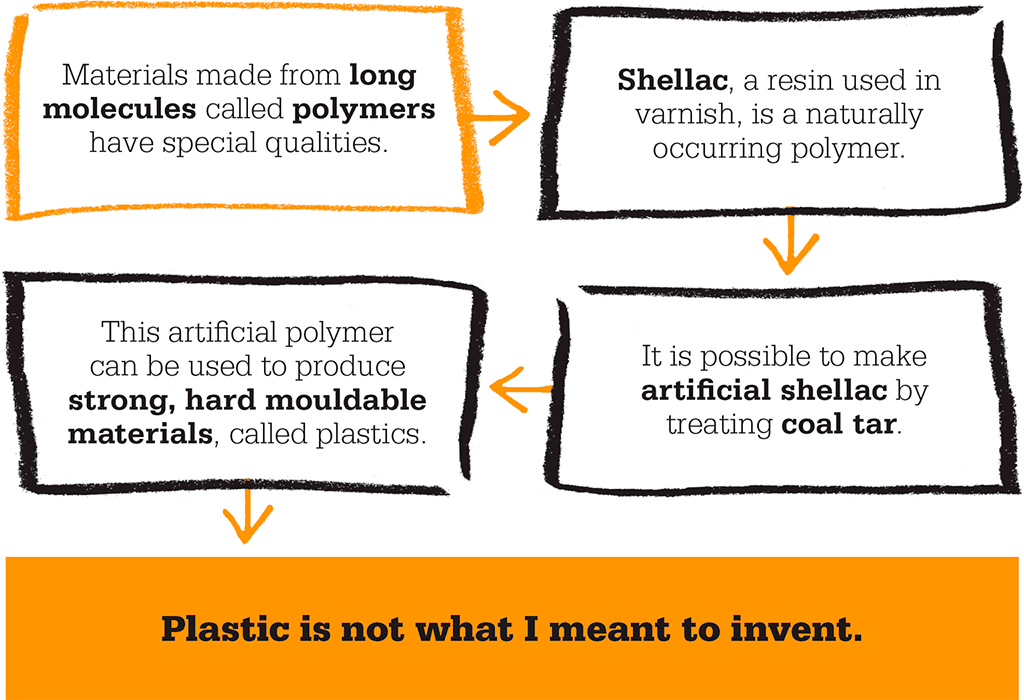
IN CONTEXT
Chemistry
1839 Berlin apothecary Eduard Simon distils styrol resin from the Turkish sweetgum tree. A century later, this is developed into polystyrene by the German IG Farben company.
1862 Alexander Parkes develops the first synthetic plastic, Parkesine.
1869 American John Hyatt creates celluloid, which is soon used instead of ivory to make billiard balls.
1933 British chemists Eric Fawcett and Reginald Gibson of the ICI company create the first practical polythene.
1954 Italian Giulio Natta and German Karl Rehn independently invent polypropylene, now the most widely used plastic.
The discovery of synthetic plastics in the 19th century opened the way to the creation of a huge range of solid materials unlike anything that had ever been known before – light, non-corroding, and capable of being moulded into almost any imaginable shape. While plastics can occur naturally, all of the plastics now in widespread use are entirely synthetic. In 1907, Belgian-born American inventor Leo Baekeland created one of the first commercially successful plastics, now known as Bakelite.
What gives plastic its special quality is the shape of its molecules. With only a few exceptions, plastics are made from long organic molecules, known as polymers, strung together from many smaller molecules, or monomers. A few polymers occur naturally, such as cellulose, the main woody substance in plants. Although the molecules of natural polymers were far too complex to work out in the 1800s, some scientists began to explore ways of making them synthetically from chemical reactions. In 1862, British chemist Alexander Parkes created a synthetic form of cellulose, which he called Parkesine. A few years later, American John Hyatt developed another, which became known as celluloid.

"I was trying to make something really hard, but then I thought I should make something really soft instead, that could be moulded into different shapes. That was how I came up with the first plastic."
Leo Baekeland
Imitating nature
After developing the world’s first photographic paper in the 1890s, Baekeland sold the idea to Kodak and used the money to buy a house equipped with its own laboratory. Here, he experimented with ways of creating synthetic shellac. Shellac is a resin secreted by the female lac beetle. It is a natural polymer that was used to give furniture and other objects a tough, shiny coat. Baekeland found that by treating phenol resin made from coal tar with formaldehyde, he could make a kind of shellac. In 1907, he added various kinds of powder to this resin and found that he could create a remarkable hard, mouldable plastic.
Chemically this plastic is known as polyoxybenzylmethylenglycolan-hydride, but Baekeland called it simply Bakelite. Bakelite was a “thermoset” plastic – plastic that holds its shape after being heated. Due to its properties of electrical insulation and heat-resistance, Bakelite was soon being used to make radios, telephones, and electrical insulators. Many more uses were quickly found for it.
Today, there are thousands of synthetic plastics, including Plexiglass, polythene, low-density polyethylene, and cellophane, each with its own properties and uses. The majority are based on hydrocarbons (chemicals made from hydrogen and carbon) derived from oil or natural gas. However, in recent decades, carbon fibres, nanotubes and other materials have been added to create superlight, superstrong plastic materials such as Kevlar.

Heat-resistant and non-conductive of electricity, Bakelite was an ideal material to use for the casings of electrical goods such as telephones and radios.
LEO BAEKELAND

Leo Baekeland was born in Ghent in Belgium and studied at the university there. In 1889, he became associate professor of chemistry and married Celine Swarts. While the young couple were on honeymoon in New York, Baekeland met Richard Anthony, head of a well-known photographic company. Anthony was so impressed by Baekeland’s work with photographic processes that he hired him as a consulting chemist. Baekeland moved to the USA and was soon in business for himself.
Baekeland invented the first photographic papers, known as Velox, before developing Bakelite, which made him rich. He is credited with many inventions besides plastic, registering more than 50 patents in total. In later life, he became an eccentric recluse, eating food only from tin cans. He died in 1944 and is buried in Sleepy Hollow Cemetery, New York.
Key work
1909 Paper on Bakelite read to the American Chemical Society
See also: Friedrich Wöhler • August Kekulé • Linus Pauling • Harry Kroto